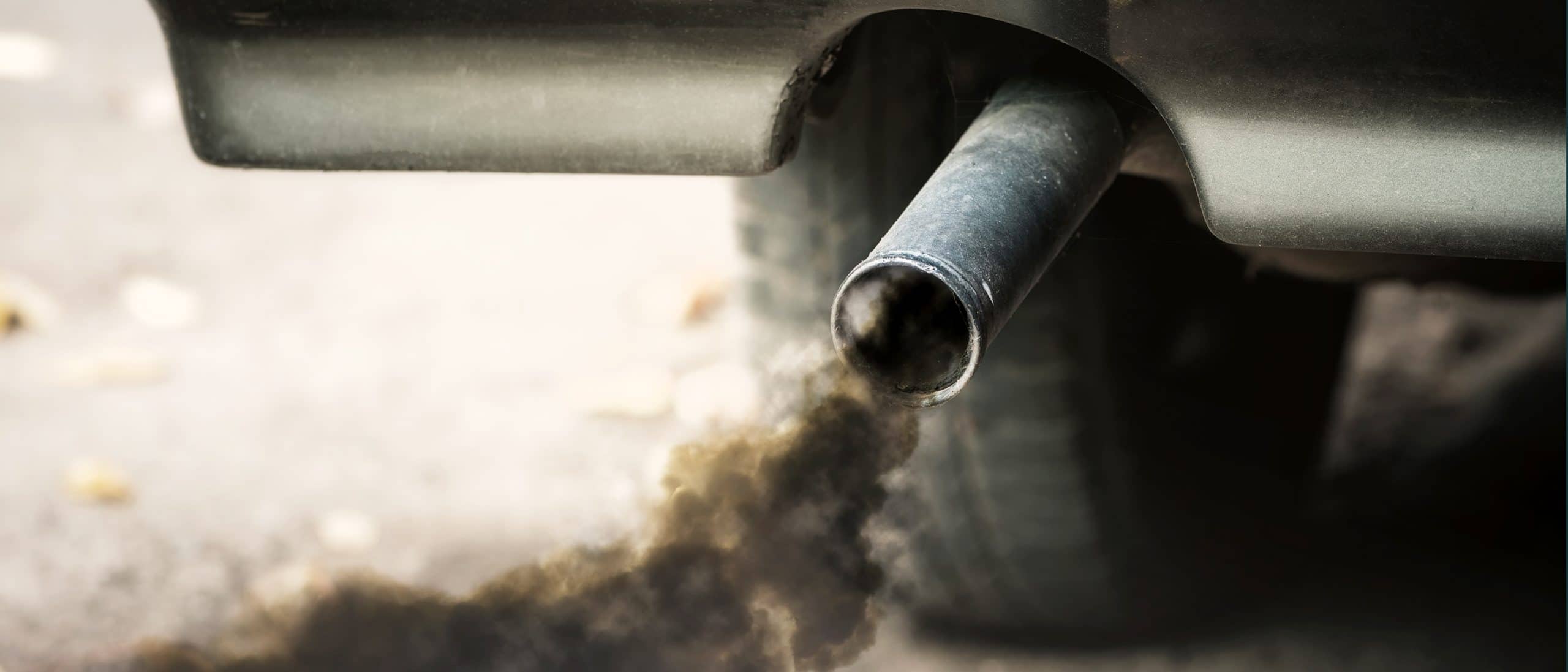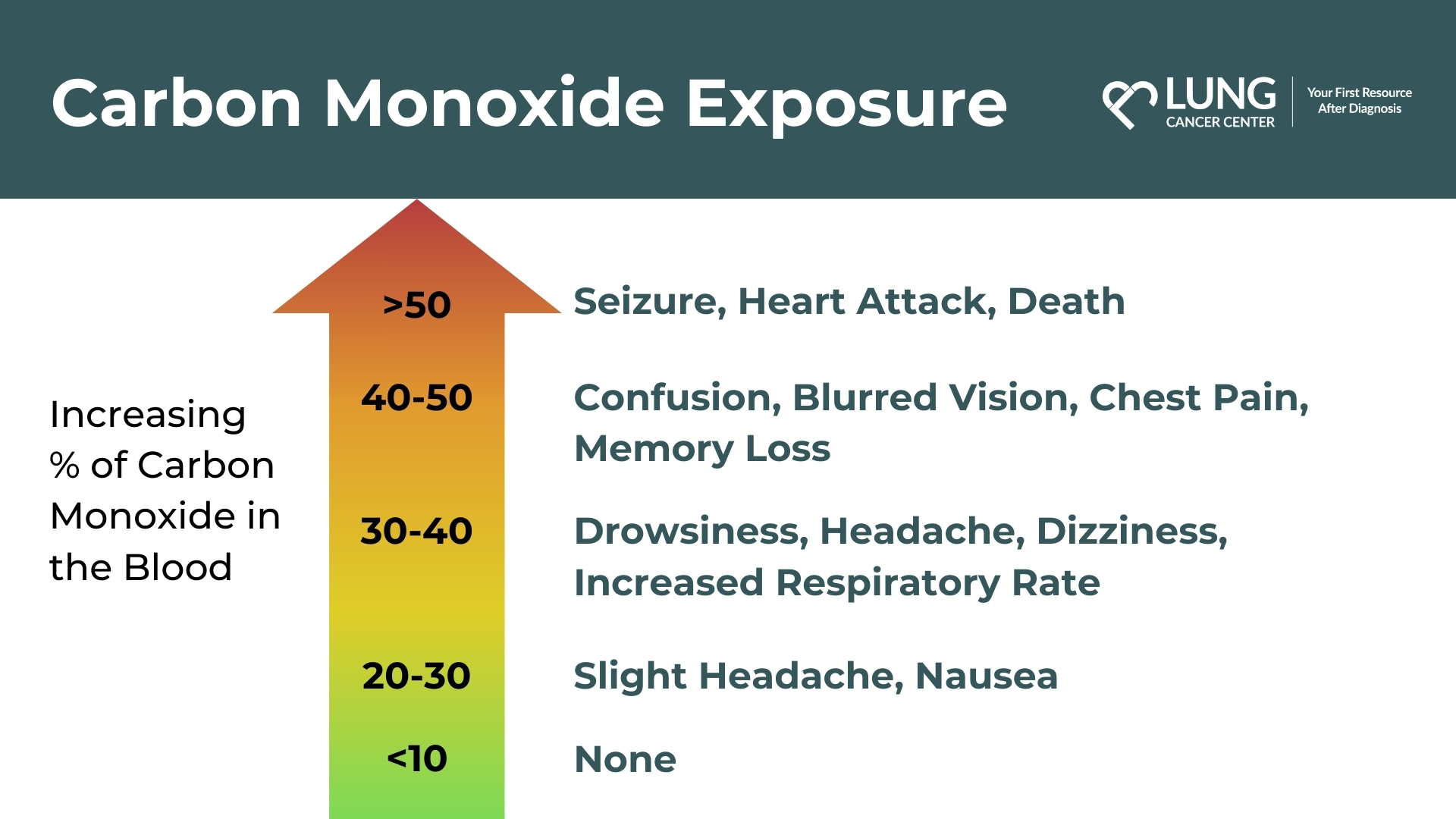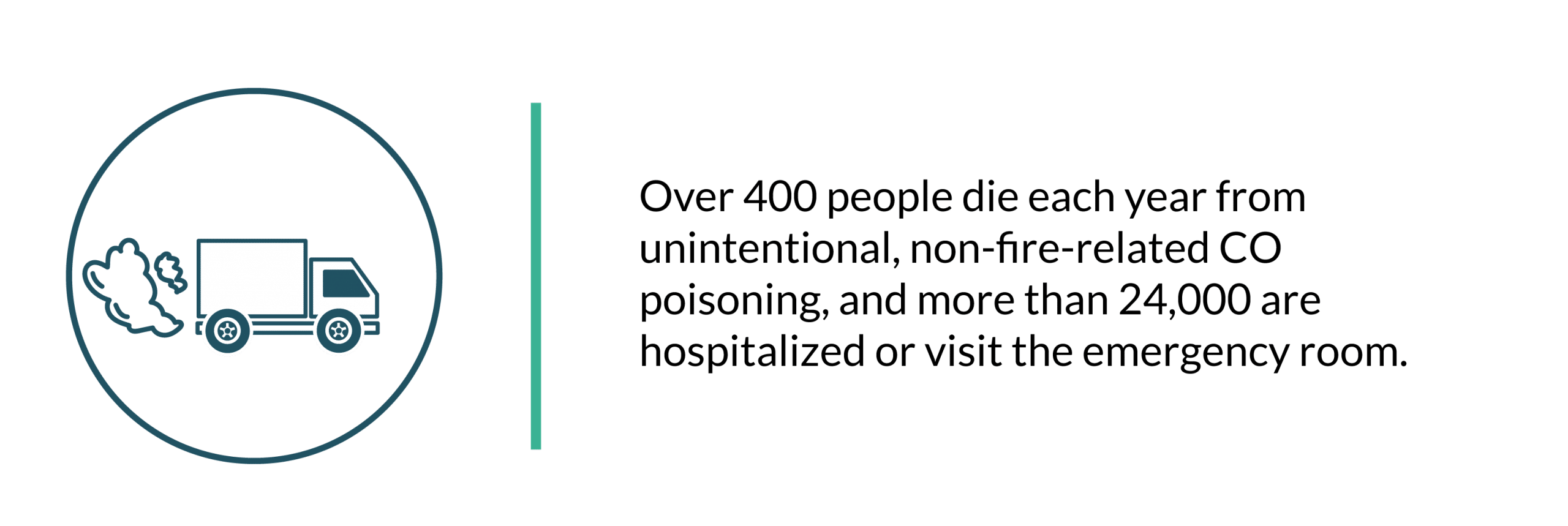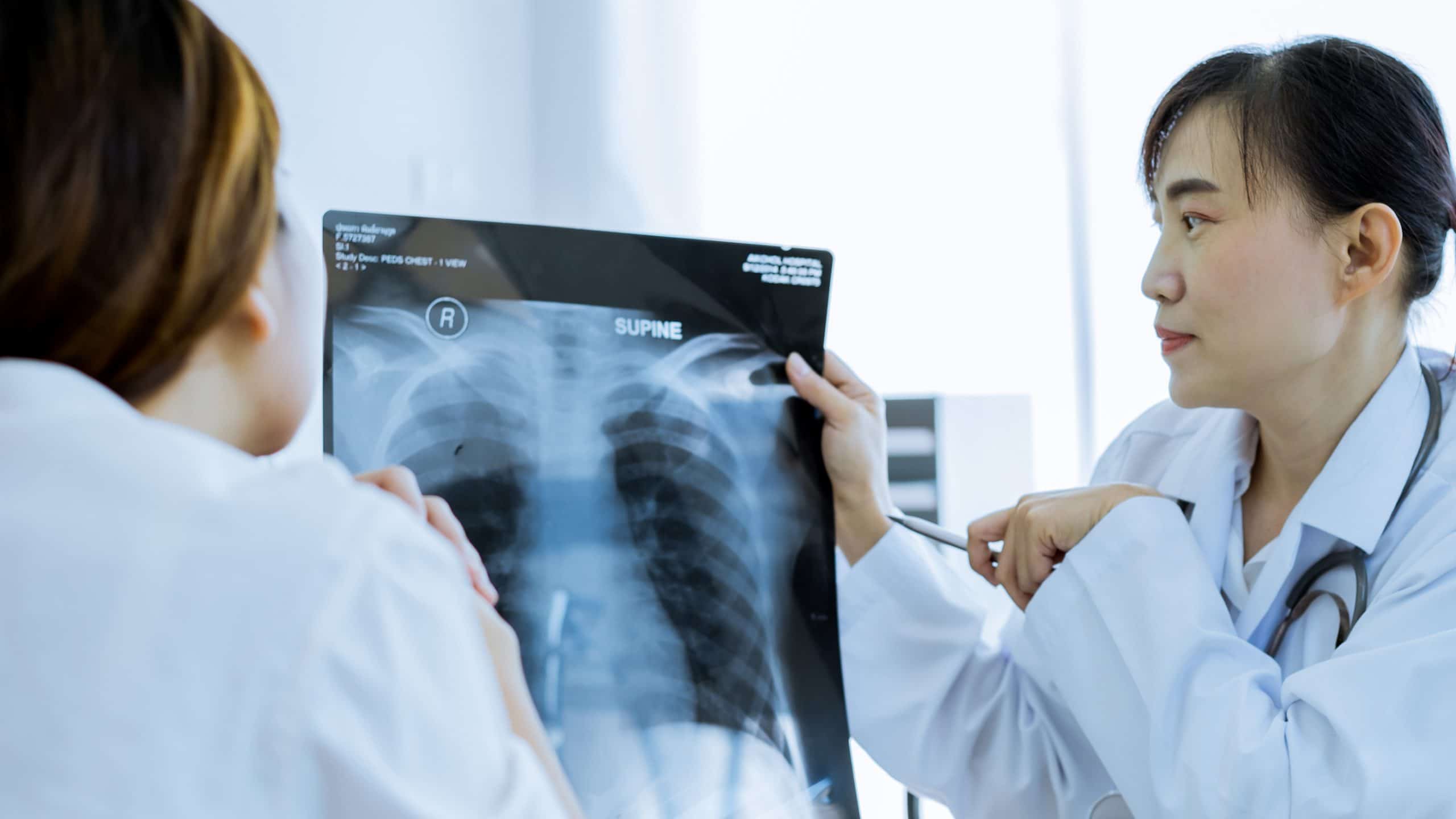Carbon Monoxide Exposure
Carbon monoxide is the leading cause of poisoning death in the U.S. Exhaust fumes and faulty fuel-burning engines can lead to occupational exposure.


Occupational Exposure to Carbon Monoxide
Environmental and occupational exposure to carbon monoxide (CO) is the leading cause of poisoning deaths in the U.S. today. Though everyone breathes in small amounts of carbon monoxide (an odorless, colorless, and tasteless gas) in the everyday air, high concentrations of CO make it harder for the body to move oxygen around the body. Often, workplaces are at high risk for hazardous exposure due to the use of combustion engines in enclosed, poorly ventilated spaces.
Common sources of CO exposure include:
- Automobile exhaust
- Blast furnaces and coke ovens
- Boiler rooms
- Coal and oil furnaces
- Fireplaces and wood stoves
- Gas-powered appliances
- Gas-powered tools and equipment
- Space heaters
Carbon monoxide is commonly known as the “silent killer” because it has no detectable odor and can move through walls and ceilings. Additionally, contact with CO can lead to side effects over long periods of time through low doses or very rapidly through a single incident of extreme contact. Over 400 people die each year from unintentional, non-fire-related CO poisoning, and more than 24,000 are hospitalized or visit the emergency room.

When carbon monoxide enters the body, it binds swiftly with hemoglobin (a red blood cell that transports oxygen through the circulatory system). Hemoglobin’s attraction to CO is 300 times higher than its attraction to oxygen, severely limiting the body’s ability to acquire and send oxygen to organs like the brain, lungs, and heart.
A few minutes without oxygen or with low levels of oxygen can cause long-term damage to brain cells and the heart. The side effects of short-term and low levels of exposure, however, may be reversible.
Signs and Symptoms
Early signs of CO exposure mimic other, more common illnesses (like the flu or food poisoning), which sometimes make it harder to diagnose. In situations where workers breathe in low levels of CO, effects may take time to appear–although cellular damage may already be in motion.
Commonly, people recognize the signs of overexposure to carbon monoxide when an individual has lost consciousness. Vigilant coworkers may recognize other identifiable effects of CO before this point.
Low levels of carbon monoxide exposure may cause:
- Confusion
- Disorientation
- Dizziness
- Headache
- Nausea
- Weakness
After inhaling high levels of CO, a person might experience symptoms like:
- Anxiety
- Confusion
- Depression
- Difficulty seeing
- Fatigue
- Heart failure
- Nausea
- Seizures
- Vomiting
The long-term health effects of carbon monoxide poisoning include damage to systems that require plenty of oxygen to function. Exposure-related brain damage may lead to cognitive and/or physical impairments ranging from a complete loss of consciousness to death. Those who already suffer from heart and/or breathing problems can be more severely affected by inhaling CO.
Hazardous levels of exposure to carbon monoxide also put workers at risk for diseases like:
- Bladder cancer
- Esophageal cancer
- Larynx cancer
- Lung cancer
- Pancreatic cancer
- Stomach cancer

Treatment
When a worker arrives in the ER with CO poisoning, the typical response is the treatment of symptoms. Initially, a lung cancer diagnosis requires a blood test. The most common result of CO poisoning is hypoxia (i.e., a condition defined by a lack of adequate oxygen supply in an area of the body). As such, mild cases of poisoning receive oxygen therapy and are monitored until CO blood levels return to normal. Severe cases of carbon monoxide poisoning, however, receive a heightened form of oxygen treatment known as hyperbaric oxygen therapy (a type of treatment that refills blood oxygen levels while removing CO).
Cancers and other chronic pulmonary and cardiac diseases caused by CO exposure often require combinations of other types of treatment, such as surgery, chemotherapy, and radiation.
At-Risk Occupations
Sources of CO exposure are a result of the incomplete combustion of carbon fuels due to inadequate levels of oxygen–the process typically produces greater amounts of carbon monoxide in place of carbon dioxide. Compressors, gas generators, power tools, pumps, space heaters, and welding equipment are examples of potential CO exposure risks.
Workers in the following industries or occupations may also be at risk of dangerous short- and long-term CO exposure:
- Breweries
- Diesel engine operators
- First responders
- Garage mechanics
- Forklift operators
- Longshore workers
- Marine terminals
- Maritime workers
- Paper and pulp production
- Petroleum refineries
- Steel manufacturing
- Taxi drivers
- Tollbooth and tunnel attendants
- Warehouses
- Welders
Furthermore, many of the workers in these types of jobs face even greater poisoning risks during winter months, when doors and windows are often shut to conserve energy. Even minor reductions in workplace ventilation can lead to CO poisoning and/or heightened levels of occupational exposure that can be hazardous to employees’ long-term health.
Legal Info
Generally, it is an employer’s responsibility to monitor carbon monoxide levels and ensure safe air quality levels. Those who are negligent may face legal repercussions from people who are eligible to make a claim.
For more information about occupational exposure settlements, fill out our free case evaluation form.


